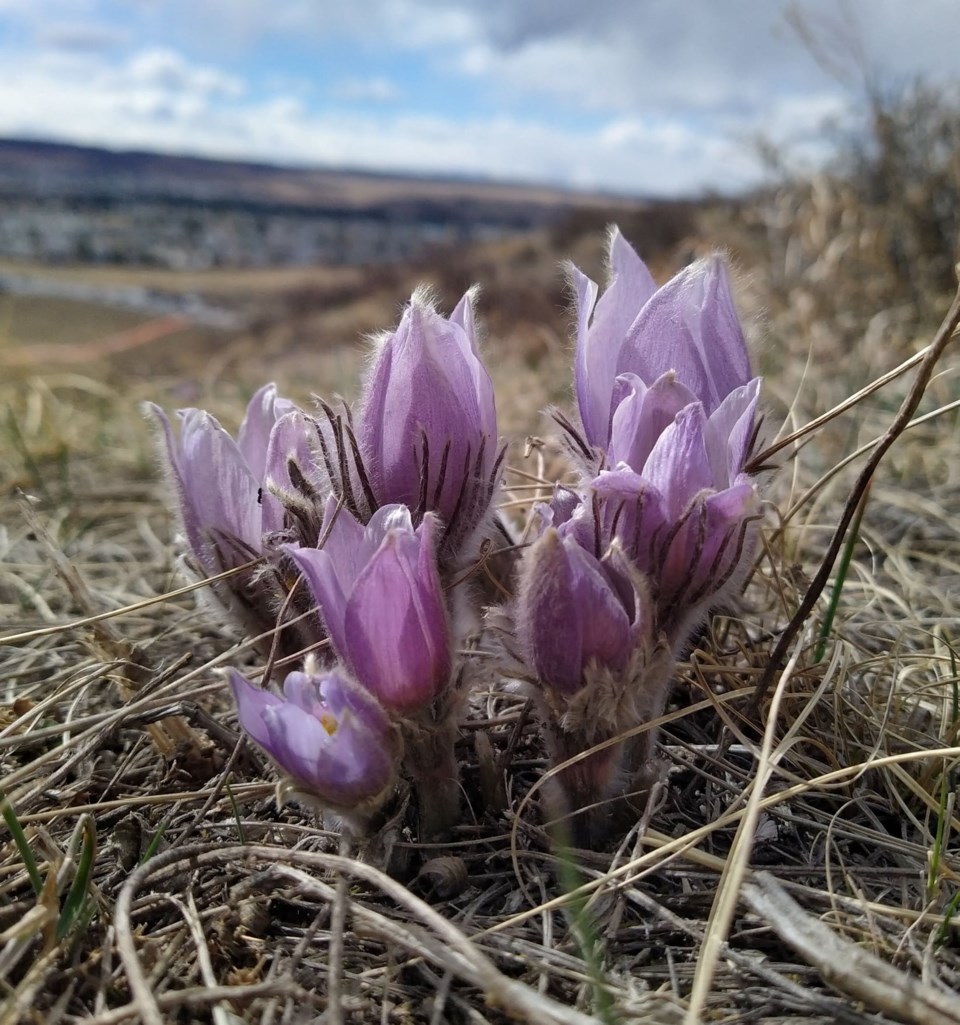As proof that environmental concerns and construction interests can indeed operate hand-in-hand, local environmentalists and bulldozer operators have reached an accommodation that will allow wildflower enthusiasts to salvage rare specimens of ancient grassland species on the outskirts of Cochrane.
The wildflower interest group was happily surprised to hear this week that their efforts to gain access to the construction site for the new on-ramp at the intersection of highways 1A and 22 were successful, and they would be allowed to come with their shovels and pails on Sunday, May 8 for a plant rescue. Several groups are planning on coming, including groups from the University of Calgary and Town of Carstairs.
The win-win solution will allow time to dig up some rare flowers and grasses without slowing down construction timelines at the new northbound on-ramp site.
The site will be clearly marked off at the top of the hill, adjacent to the cowboy statue.
Mathis Natvik, a professor at the University of Calgary, and wildflower advocate Blake McNeill belong to an active Facebook group that shares information about native grasses and wildflowers.
McNeill spearheaded the effort to salvage some pristine, mature plant specimens from the south-facing hillside just above where a bulldozer began stripping away the topsoil a couple of weeks ago.
He said the provincial ministries of transportation and environment were very helpful, and the project management team from ISL Engineering deserves the credit for organizing the plant salvage in such a short time frame.
“They must’ve been leaping through hoops of fire to organize this as quick as they did. We’re just happy to get this opportunity,” he said.
One of the challenges will be to do no harm to the rare plant specimens, McNeill added.
“We’re also trying to prevent a negative impact in terms of restoring the site. We don’t want to introduce a bunch of invasive species,” he said.
The area at the bottom of the hill is not a native grassland site – it is on the site of the old brick factory.
McNeill says mature plants are valuable because they are established and growing them from seed is a struggle which does not produce plants with the same vigour.
Natvik is a professor of landscape architecture at the University of Calgary and a grassland specialist. The Town contacted him on the weekend to let him know the group would be allowed access May 8.
The group might have missed learning about the opportunity altogether if it were not for Natvik, who hiked up the hill during the first week of April. Afterwards, he posted pictures and comments to the Facebook group. Under the headline Ancient Grassland to be Destroyed, he identified 21 species of native wildflowers and four native grasses on the site.
He said there are very few high-quality grasslands like this left in the Foothills Parklands around Cochrane, and most have been destroyed for housing developments.
“Mature grasslands originated about 9,000 years ago and it can’t be replaced – that kind of diversity takes 6,000 years to mature,” he said.
Natvik is also involved in a native grassland restoration project on two acres of land at the University of Calgary, where the goal is to re-create native grasslands.
Anyone wishing further information including how to participate on Sunday can email McNeill at [email protected].




